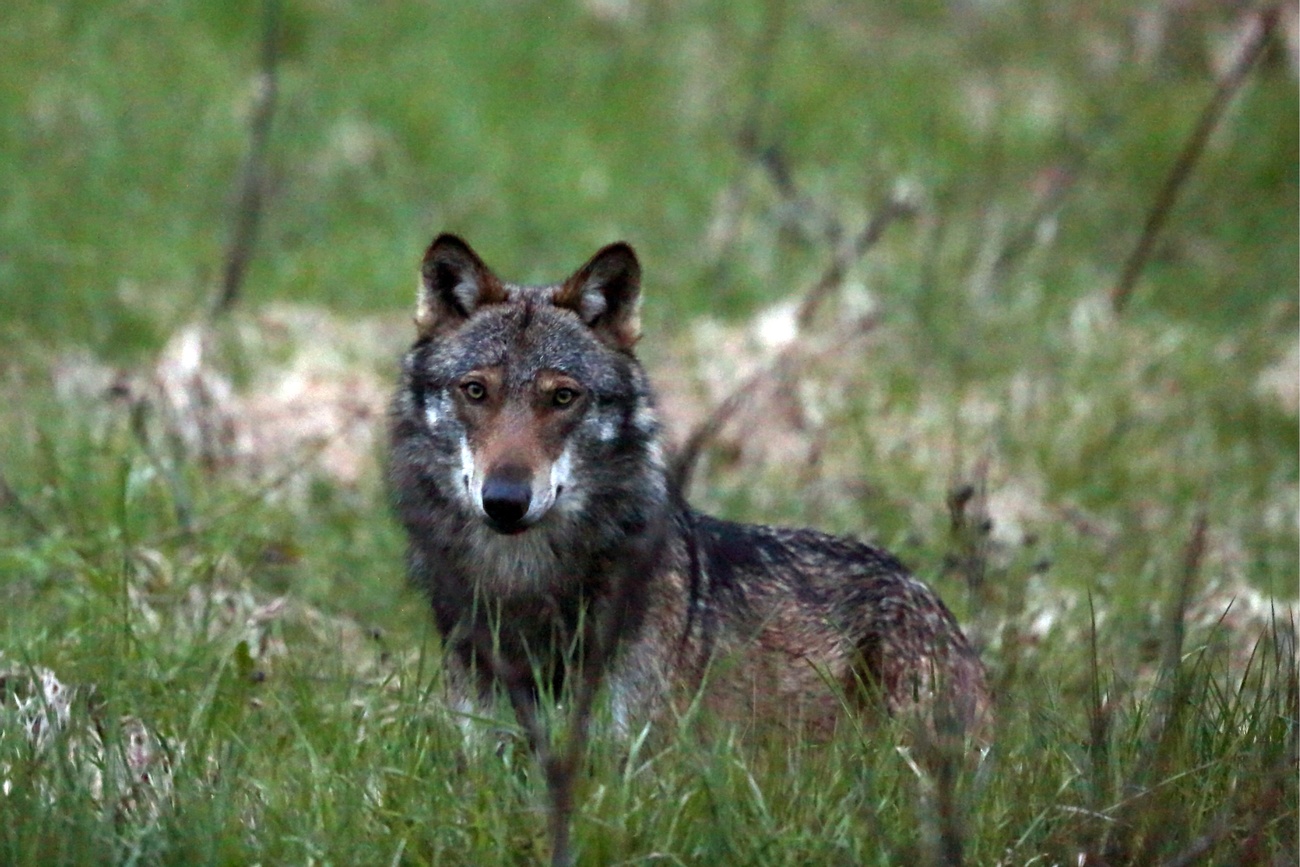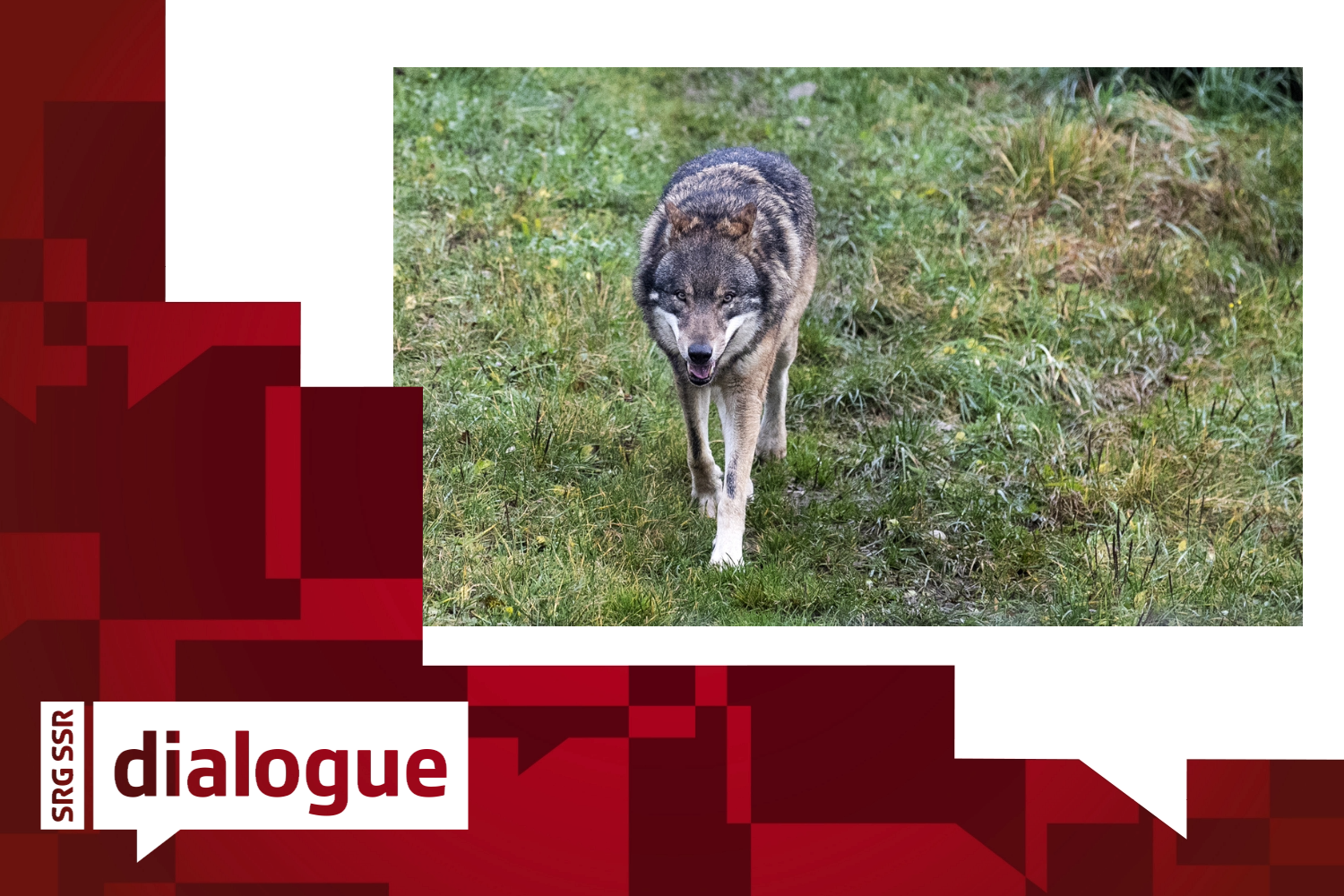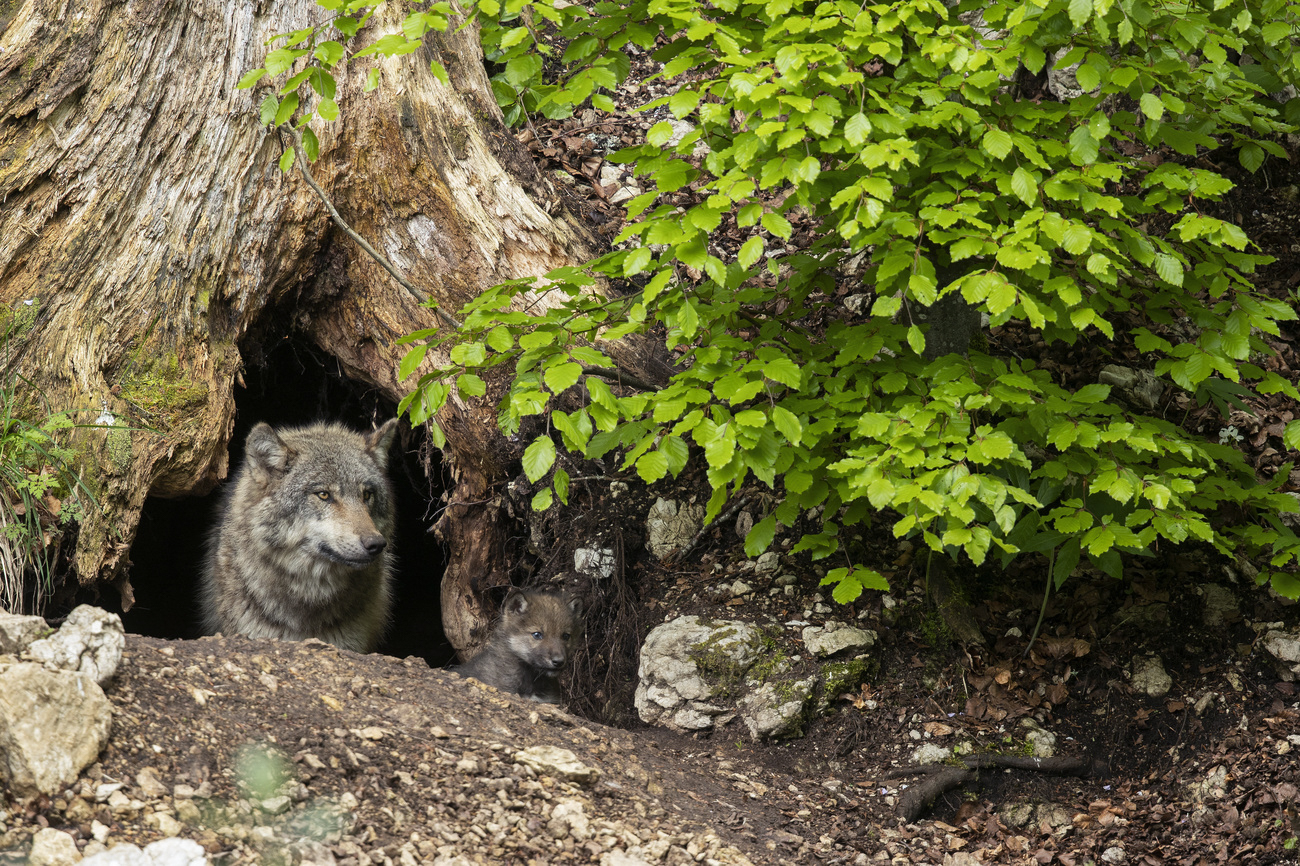Wolf crackdown in Switzerland: a sign of what’s to come in Europe?

The Swiss government’s plan for a preventative cull of wolves has been partially put on ice after a legal appeal. But Bern’s approach could yet be a sign of what’s to come elsewhere in Europe.
When it comes to grabbing media attention, aspiring influencers would do worse to take inspiration from the wolf. The animal, of which there were about 300 in Switzerland last year, makes it into the news almost daily, as arguments rage about culling, coexisting, or everything in between.
Attention particularly spiked after a government decision in November allowing a preventative cull of up to 70% of the wolf population. The plan aimed to tackle the rapid growth of the predator – it has been increasing by 30% annually – and of attacks on livestock, which tripled between 2019 and 2022.
Since then, debates have spread and conservation groups have turned to the courts, partially succeeding in putting some culls on ice – notably in Graubünden in southeastern Switzerland. Meanwhile there’s been blow-by-blow accounts of direct hits elsewhere: in canton Valais, 21 wolves were shot by January 2, out of a total of 34 the canton wants to kill by February.

More
Wolves in Switzerland: cull or protect?
European issue
What sometimes gets lost in the widespread reporting is the cross-border nature of the issue. As John Linnell from the Norwegian Institute for Nature Research told SWI swissinfo.ch last year, “the whole idea of killing wolves or even managing large carnivore populations is currently one of the most divisive issues in Europe”.
Swiss numbers pale in comparison to the European total. After receding in the mid-20th century, over 20,000 wolves now live across the European Union, the EU Commission notes – a “conservation success” made possible by strict laws to protect the six “large carnivore species” still on the continent (the others are the brown bear, the Eurasian lynx, the Iberian lynx, the wolverine, and the golden jackal).
Countries with the biggest wolf populations – according to 2021 estimates – are meanwhile Italy (3,307), Romania (2,500-3,000), Bulgaria (2,712), and Poland (1,886); Swiss neighbour France is home to 783, while German statistics are limited to 158 packs.
To complicate the issue, as Swiss public broadcaster SRF writesExternal link, wolves – like people – move regularly across borders. Nine of the Swiss packs roam territories which straddle a frontier. University of Rome expert Luigi Boitani even told SRF about a tagged wolf who travelled 2,000 kilometres from the canton of Graubünden to Slovakia.
How other countries deal with wolves thus has an impact on what Switzerland does; and with other EU nations bound by strict EU conservation rules, any large-scale Swiss cull would look somewhat smaller in overall terms. And as wolves are free to enter Switzerland from neighbouring countries, the hunt would in any case have to be repeated every year, Boitani told SRF.

More
When it’s legal to shoot the wrong wolf
Brussels proposal
However, the Swiss government’s shift to a proactive and preventative approach could be a forerunner of what’s to come elsewhere. Just before Christmas, the European Commission proposedExternal link to downgrade the wolf’s status from “strictly protected” to “protected” – a move which, like in Switzerland, would soften the rules for when the predator could be hunted.
Presenting the idea as a compromise, Commission president Ursula von der Leyen said that while the return of wolves is “good news for biodiversity”, “the concentration of wolf packs in some European regions has become a real danger especially for livestock”. “To manage critical wolf concentrations more actively, local authorities have been asking for more flexibility,” she said.
Biodiversity groups were unimpressed. An open letterExternal link by 300 NGOs said the proposal was based on “anecdotal” data, and the consultation process was dominated by farming and hunting lobbies. Some even said von der Leyen had a personal agenda; the Commission president’s pony “Dolly” was famously killed by a wolf in northern Germany in 2022.
The Commission, for its part, argued that its plan was based on an “in-depth analysis” and “new data on increased populations and impacts” – though some of this data was gathered during an 18-day period in September which NGOs also said wasn’t long enough.
Back to Bern
Despite the Commission’s intent, however, widespread culls are not likely to materialise in Europe very soon. The idea needs the backing of a majority of the 27 EU member states, and it would also entail a change to the international agreement underpinning the EU’s Habitats Directive: the Convention on the Conservation of European Wildlife and Natural Habitats, signed in 1979 in – Bern.
As such, the Swiss (along with the other non-EU signatories of the Bern Convention) could yet have a say in future EU wolf policy. On this point, Swiss backing for the EU’s proposal seems clear, and not just due to its current cull efforts: the country has twice previously proposed that the Bern Convention downgrade the wolf’s status to “protected” – most recently in November 2022.

In compliance with the JTI standards
More: SWI swissinfo.ch certified by the Journalism Trust Initiative










You can find an overview of ongoing debates with our journalists here . Please join us!
If you want to start a conversation about a topic raised in this article or want to report factual errors, email us at english@swissinfo.ch.